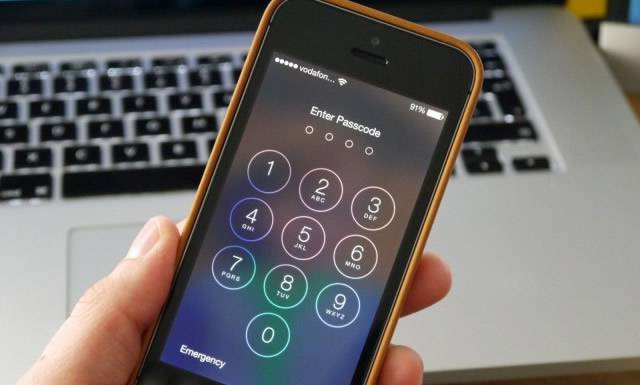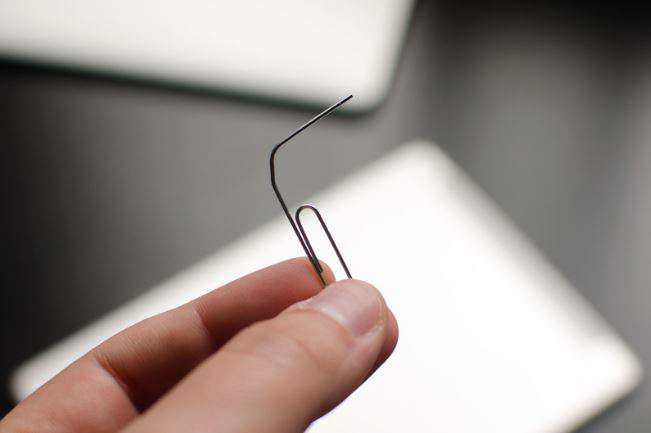Importing photos from an iPhone to a Mac is a common task that many users need to perform. Whether it’s to free up storage space on the phone or to have easy access to the photos on a larger screen, transferring photos from an iPhone to a Mac can be done in various ways. In this blog post, we will explore different methods to import photos from an iPhone 13 to a Mac, including using the Photos app, iCloud, AirDrop, and third-party software. We will also discuss the pros and cons of each method, common challenges users may encounter, and provide recommendations to ensure a smooth photo transfer process.
What’s Needed
Before diving into the different methods of importing photos from an iPhone 13 to a Mac, let’s first ensure that you have everything you need:
- Mac computer (MacBook, iMac, or Mac mini) with macOS operating system
- iPhone 13 with the latest iOS version
- Lightning to USB cable (the cable that comes with your iPhone)
- Sufficient free storage space on your Mac to accommodate the imported photos
Video Tutorial:
What Requires Your Focus?
When importing photos from an iPhone 13 to a Mac, there are a few key aspects that you should pay attention to:
- Choosing the right method: Depending on your preferences and specific needs, you can opt for different methods to import photos. Each method has its pros and cons, as we will explore in this blog post.
- Managing storage space: Transferring photos from your iPhone to your Mac can consume a significant amount of storage space, especially if you have a large photo library. Make sure to check the available storage on your Mac before initiating the import process.
- Maintaining photo quality: It’s important to ensure that the imported photos retain their original quality. Some methods may compress the photos or reduce their resolution, resulting in a loss of quality. We will discuss this aspect for each method in detail.
- Organizing photos: Once the photos are imported, you may want to organize them into albums or folders on your Mac for easier access and management. We will provide recommendations on how to organize your imported photos efficiently.
Option 1. How to Import Photos From iPhone 13 to Mac via Photos App
The Photos app is a native application on macOS that allows users to import, organize, and edit their photos. It provides a straightforward method to import photos from an iPhone 13 to a Mac. Here’s how:
Step 1: Connect your iPhone 13 to your Mac using the Lightning to USB cable. Ensure that both devices are unlocked and trust each other if prompted.
Step 2: On your Mac, launch the Photos app. It should open automatically when your iPhone is connected.
Step 3: In the Photos app, you will see your iPhone listed under the “Devices” section in the sidebar. Click on your iPhone’s name.
Step 4: You will see a grid of photos and videos on your iPhone. Select the photos you want to import by clicking on them. You can import all the photos by clicking on “Import All New Photos.”
Step 5: After selecting the photos, click on the “Import Selected” button at the top right corner of the Photos app. The selected photos will start importing to your Mac’s photo library.
Pros:
- Simple and intuitive process
- Photos retain their original quality
- Opportunity to organize photos into albums during the import process
Cons:
- Requires a physical connection between the iPhone and the Mac
- Importing process can be time-consuming for a large number of photos
Option 2. How to Import Photos From iPhone 13 to Mac via iCloud
If you prefer a wireless method to transfer photos from your iPhone 13 to your Mac, iCloud can be a convenient option. By enabling iCloud Photos on both devices, your photos will automatically sync across devices. Here’s how to set it up:
Step 1: On your iPhone 13, go to Settings, then tap on your Apple ID at the top.
Step 2: Tap on “iCloud,” then “Photos.” Enable the “iCloud Photos” toggle. Make sure to select the “Optimize iPhone Storage” option if you have limited device storage.
Step 3: On your Mac, go to System Preferences, then click on “Apple ID.”
Step 4: Select “iCloud” on the left sidebar, then check the “Photos” box. Ensure that the “Download Originals to this Mac” option is selected.
Step 5: Wait for a few moments as the photos sync between your iPhone and Mac. Once the sync is complete, you can access your iPhone 13 photos through the Photos app on your Mac.
Pros:
- Wireless and automatic syncing
- Photos can be accessed from any device with an internet connection
- No need for a physical connection between the iPhone and the Mac
Cons:
- Requires an active internet connection
- Dependent on available iCloud storage
- May experience syncing delays or errors
Option 3. How to Import Photos From iPhone 13 to Mac via AirDrop
AirDrop is another wireless method that allows for quick and direct sharing of files between Apple devices. It can be an efficient way to transfer photos from an iPhone 13 to a Mac. Here’s how to use AirDrop for photo transfer:
Step 1: On your iPhone 13, open the Photos app and select the photos you want to transfer.
Step 2: Tap on the share button (the square with an upward arrow), and choose the Mac you want to send the photos to from the AirDrop section.
Step 3: On your Mac, you will receive an AirDrop request from your iPhone. Accept the request.
Step 4: The selected photos will be transferred to your Mac and saved to the Downloads folder by default.
Pros:
- Quick and direct transfer
- No need for internet access or cables
- The transferred photos are saved as original files
Cons:
- Requires both devices to be in proximity
- May experience connectivity issues or compatibility problems
- Suitable for transferring a small number of photos
Option 4. How to Import Photos From iPhone 13 to Mac via Third-Party Software
If you prefer more control and additional features for photo transfer, there are third-party software options available. These applications provide advanced functionalities and customization options. One popular choice is the iMazing software. Here’s how to use iMazing to import photos:
Step 1: Download and install the iMazing software on your Mac.
Step 2: Connect your iPhone 13 to your Mac using the Lightning to USB cable. Launch iMazing, and it should detect your iPhone.
Step 3: Click on the “Photos” tab in iMazing and select the photos you want to transfer to your Mac.
Step 4: Choose a destination folder on your Mac for the imported photos, then click on the “Export to Folder” button. iMazing will start transferring the selected photos to the specified folder.
Pros:
- Offers advanced features and customization options
- Allows selective transfer and management of photos
- Compatible with both Mac and Windows
Cons:
- Requires purchasing and installing third-party software
- Can be overwhelming for users looking for a simple and straightforward solution
Why Can’t I Import Photos From iPhone 13 to Mac?
While the methods mentioned above should cover most users’ needs for importing photos from an iPhone 13 to a Mac, there might be situations where the standard methods don’t work. Here are three alternative solutions:
1. Insufficient or incompatible cable: If you’re using a non-certified or defective Lightning to USB cable, it may cause connection issues. Try using a different cable or a certified Apple cable to ensure a reliable connection.
2. Outdated software: Ensure that your iPhone and Mac are running the latest software versions. Updates often include bug fixes and compatibility improvements that can resolve import issues.
3. Permissions and settings: On your iPhone, go to Settings, then tap on “Privacy” and make sure that the Photos app has permission to access and transfer data. On your Mac, check the system preferences and ensure that the necessary permissions are granted for photo import.
Implications and Recommendations
When importing photos from an iPhone 13 to a Mac, it’s essential to consider the implications and follow some recommendations:
- Backup your photos: Before initiating any import process, it’s wise to create a backup of your iPhone photos. This ensures that you have a copy of your precious memories in case of accidental deletion or data loss during the transfer.
- Organize your imported photos: Take some time to organize your imported photos into albums or folders on your Mac. This will make it easier to find and manage specific photos in the future.
- Regularly clean up your iPhone: Once you have successfully imported your photos to your Mac and verified their integrity, consider deleting them from your iPhone to free up space for new memories. However, make sure you have a backup before deleting any photos.
The Bottom Line
Importing photos from an iPhone 13 to a Mac can be accomplished through various methods, depending on your preferences and requirements. The Photos app, iCloud, AirDrop, and third-party software like iMazing offer different approaches with their own pros and cons. By following the recommended guidelines and considering the implications, you can smoothly transfer your photos and enjoy them on your Mac’s larger screen.
5 FAQs about Importing Photos From iPhone 13 to Mac
Q1: Can I import photos from my iPhone 13 to multiple Macs?
A: Yes, you can import photos from your iPhone 13 to multiple Macs using any of the mentioned methods. However, keep in mind that syncing photos across multiple devices can result in duplicate copies if not managed properly.
Q2: Will importing photos from my iPhone 13 to my Mac delete them from my iPhone?
A: No, importing photos from your iPhone 13 to your Mac will not delete them from your iPhone unless you specifically choose to delete them after verifying the successful transfer. It’s always recommended to have a backup of your photos before deleting them from any device.
Q3: Are there any file format limitations when importing photos from iPhone 13 to Mac?
A: The standard photo formats (JPEG and HEIF) captured by the iPhone 13 camera are compatible with the Photos app on Mac. However, if you shoot and store photos in RAW format or use specific third-party camera apps, you may encounter compatibility issues or need to use specialized software for import.
Q4: How can I ensure that imported photos maintain their quality?
A: To ensure that imported photos maintain their quality, use methods that preserve the original file format, such as the Photos app or AirDrop. Importing compressed or resized versions of photos may result in a loss of quality. Always double-check the imported photos on your Mac to verify their quality.
Q5: Can I import photos from my iPhone 13 to a Windows PC?
A: Yes, you can import photos from an iPhone 13 to a Windows PC using various methods. Windows provides its native photo import functionality, or you can use third-party software like iTunes or iCloud for Windows. The exact steps may vary depending on the specific software and version you are using.




